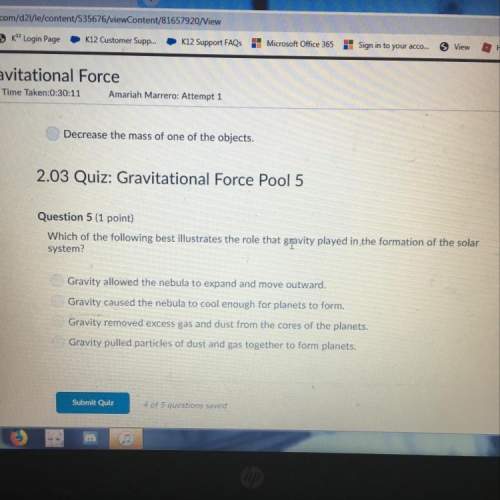
Chemistry, 02.03.2021 05:00, wpatskiteh7203
Now run this simulation e that demonstrates the properties of gases. The simulation shows a container with a lid
on top. The lid can be opened and closed by dragging it left and right. On the left side of the container is a yellow
handle. Drag this handle right or left to decrease or increase the volume of the container. On the top right of the
container are a thermometer and a pressure gauge. Follow these steps to use the simulation, and then answer the
question that follows.
1. Reduce the container to its least volume by dragging the yellow handle as far right as you can.
2. In the Gas in Chamber menu, add 80 molecules of heavy species to the container.
3. In the Constant Parameter menu, select Pressure.
4. Increase the number of heavy species molecules to 200.
What do you observe when the molecules are increased from 80 to 200 at constant pressure?

Answers: 1
Other questions on the subject: Chemistry


Chemistry, 22.06.2019 05:20, anggar20
Why does the sun appear to be the brightest star in the sky? a- its apparent brightness is much greater than other stars. b- it burns more gas, making it brighter than any other star. c- it is the largest star in the galaxy, so it is the brightest star. d- its relative distance to earth is closer than the other stars.
Answers: 1

Chemistry, 22.06.2019 14:30, srutkowske1489
Is a pencil falling to the floor anon contact force, a force, or a contact force
Answers: 1

Chemistry, 22.06.2019 14:40, neonbluefaith
Which statement best describes the function of enzymes?
Answers: 1
Do you know the correct answer?
Now run this simulation e that demonstrates the properties of gases. The simulation shows a containe...
Questions in other subjects:

Mathematics, 19.06.2020 03:57






Physics, 19.06.2020 03:57


Mathematics, 19.06.2020 03:57








